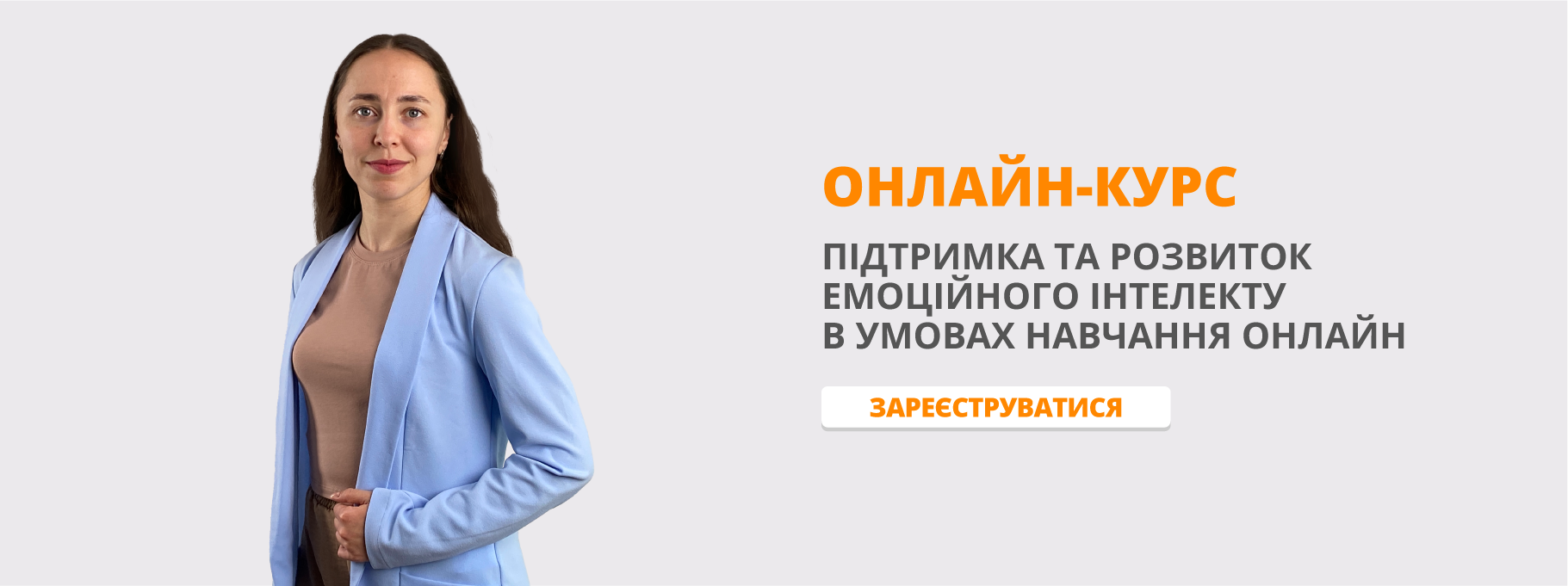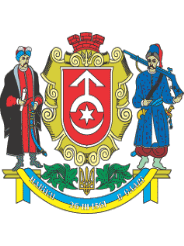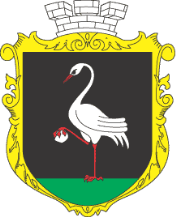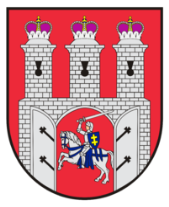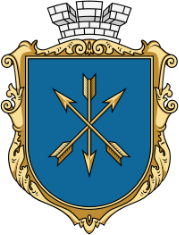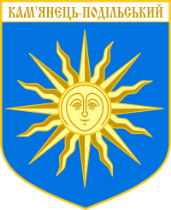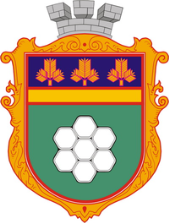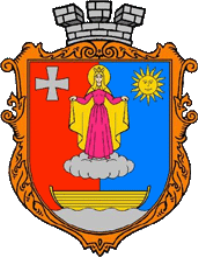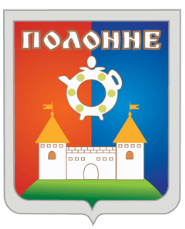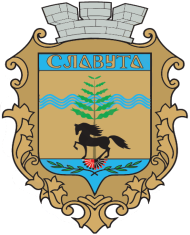Урок англійської мови у 8 класі Welcome to my native city
Lesson plan (form 8)
Theme: Welcome to my native city.
Practical objective: to develop listening, reading and writing skills, to practice speaking; to practice pupils’ habits of getting additional information from the texts.
Supportive:
To generalize and systematize knowledge, skills and abilities.
To practice the use of some/any, too much/ too many, not enough to describe the local facilities.
To form the pupils’ ability to use the content of other subjects and practical life experience to find additional information on the topic.
To form pupils’ ability to collect information and make the conclusions.
To form pupils’ need for constant self-education, productive creative activity.
To provide opportunities for developing pupils’ speaking skills based on the topic.
To develop pupils’ memory, their ability to express their thoughts logically, to broaden their outlook.
To raise pupils’ awareness about cultural and historical features of their native city and their willingness to share this information with their peers living in the English-speaking countries.
To form groups of competences:
Communication in foreign languages
Information and digital competence
Ability to learn throughout life
Social and civic
Awareness and self-expression in culture.
Methods: comparison, generalization, oral presentation, conversation, introductory, review, debates, conferences, etc.
Techniques: "Class Interview", "Brainstorming", “Open microphone", "Sentence Mosaics”, "Public Leader", "Intellectual Puzzles", "Auction of ideas", etc.
Forms of training: individual, pair, frontal, collective.
Equipment: A set of photos “Modern Dunaivtsi”, the map of Khmelnytskyi region, computer presentation of Dunaivtsi, local symbols, tests, printed materials, textbooks and visual aid.
Type of the lesson: correction of the main competences.
Procedure
I. Introduction
-How are you?
- I have a surprise for you! Pavlo, one of our classmates, has got a letter from his English pen-friend who would like to know more about our city. But he has a big problem since Dunaivtsi has become his native place only two years ago, and he does not know much about it. So today we’ll try to help him solve the problem providing with different information on a problem.
- Now it seems to me you understand what the topic of our lesson is.
P. Welcome to my native city!
T. Yes, you are right.
1. Warming up.
But, to begin with, let’s check your knowledge of the main words naming the typical city sights. I want you to take the card, read and translate the word or phrase and then comment whether we have this in our city.
A cathedral, a church, a hotel, a main square, a railway station, a park, a shop, a restaurant, a museum, a town, a street, a theatre, a cinema, a hospital, a factory, a library, a shopping mall, a supermarket, a palace, an airport, a skyscraper, a stadium, a
2. Defining the objectives.
If you work hard and put as much effort as possible, by the end of the lesson you will be able:
- To enrich your vocabulary with some new words on the topic; activate and have further practice on basic vocabulary of the topic;
- To describe the main features of your native city using the active vocabulary of the topic;
- To give your opinions on why your native city is considered to be the best place to live.
Today you will read texts, exchange information, write a description of a place, listen and act dialogues.
Task 3. Class interview.
-Why do we need to learn this topic?
-When and where you will speak about some sights and places of interest?
-Where can you use this knowledge?
II. Main part of the lesson
Task 1. Brainstorming
Let us watch the computer presentation and complete the phrase.
Dunaivtsi is a ………………..
Task 2. Associations.
Think about today’s topic. What do you associate with these phrase A modern city?
Sights gallery theatre church hotel street square cinema free time fun restaurant park café
- Make as many sentences as you can to describe our modern city. Use the words from the diagram.
Task 3. Pre - reading activities:
Now, we shall work in 5 groups. Each group will read a different part of the text about Dunaivtsi and then exchange the gained information.
They are not difficult but you will see some unknown words in these texts.
1) Introducing and activating some active vocabulary
Inhabitant - мешканець
District - район
Trade - торгівля
Plant - завод
Factory – фабрика
2) Read the sentences and try to translate paying attention to the new words:
-There are 16 000 inhabitants in Dunaivtsi.
-Khmelnytskyi region has only three districts now: Kamianets-Podilskyi, Khmelnytskyi and Shepetivskyi.
-People can buy or sell something.
-Verest is a food proceeding plant in Dunaivtsi.
-A local textile factory has been transformed into a shopping mall.
3) Write down the new words into your vocabularies. You have 2 minutes.
Task 4. Reading.
Read the plan of the text and after reading the text rearrange its parts according to the plan.
Plan.
- Location.
- Some facts on the history of the city.
- The sights of the city.
- The present facilities of the city.
- Modern renovations.
Dunaivtsi
- This small city was first mentioned in official records in 1403. In the past it was a trade centre on the way from the countries of the Danube area to the north of the Russian empire. The city residents were mainly merchants and small manufacturers. The city owes much to the Polish landlord Zigmund Krasinskyi who founded a textile manufacture in 1847 which helped its economic growth and was famous for more than a century. “Zmychka” was another big factory that made steel things.
- If you want to find a nice location in Podillia where your family can live comfortably and peacefully, Dunaivtsi is a good choice. It is located in the south of Khmelnytskyi region which is one of the biggest in south – western Ukraine. This small city stands on the Ternavka river and has a lot of picturesque ponds on its territory. The city’s population is about 16 thousand people.
- Modern Dunaivtsi is a charming place to live and raise children. There are four schools and five kindergartens. Walking along the main city street - Shevchenka street, you can see monuments to Taras Shevchenko and Vladyslav Zaremba, a memorial to the war heroes, hotels, two supermarkets, a big shopping mall and many shops, cafés and restaurants, banks and offices. In the center of the city one can see a big square surrounded with numerous administrative buildings. It is a business centre of our town.
- Dunaivtsi is constantly changing and growing. The city is home to several big food proceeding companies well – known all over Ukraine: Verest, Podilskyi Broiler, Laslava. The city stadium has recently renewed a football pitch and now can host important sport events. The city’s traffic has reduced greatly since a new circling road was introduced. New private houses and cottages as well as offices appear every year. The city encourages tourism and initiates small business. Dunaivtsi is the best city in the world because it is our small motherland.
- A lot of ancient buildings, preserved from the past, are still used for different purposes by Dunaivtsi residents. The mansion of landowner Zavoiko is now a part of the local hospital. The Capucines’ monastery was transformed into a church. The left side of the local cultural center still preserves the features of the palace of the Krasinskys. Apart from ancient buildings that speak a lot about the city’s past tourists can learn about the history of the town in two local museums. A central park is the most popular location for both children and adults. A nice fountain, comfortable benches, interesting children’s attractions and several cozy cafes there make it a favourite place of relaxation for residents and guests of Dunaivtsi. A sport school is a pride of local authorities and perfect place to develop sport talents.
Task 5. Post-Reading Activities.
The Quiz “I love my native town”
You have already formed the five groups. Try to do the tasks based on the text as quickly as possible and get more points than
other teams. The team that will get the largest score will win the quiz and the title of the best local lore learner.
- Match collocations
Buildings, local, south-western, ponds, official, manufacture, growth popular, the features, cozy, pitch, to host
1. administrative …….…
2. …………… authourities
3. ………......... Ukraine
4. picturesque ………
5. …………. records
6. textile …………….
7. economic …….…….
8. to preserve ………….
9. ……………cafes
10. football …………..
11. ………… locations
12. …………. sport events
2) Choose the correct option to complete the sentences.
1. Dunaivtsi is in the…of Ukraine.
a) south-east b) south-west c) north-west
2. The offices of local government are ….…
a) along Shevchenka Street b) all over the city c) in the centre
3. Local residents often…
a) relax in the central park b) attend sport events c) travel abroad
4. Dunaivtsi is …..… city.
a) comfortable and quiet b) cozy and noisy c) nice and quite noizy
5. The city was …………
a) started by textile manufactures b) first informed about c) got the title of the city
6. In the past there were a lot of….… in Dunaivtsi.
a) tradesmen b) food proceeding plants c) sport facilities
3) Read the statements and define whether they are True/ False
- Dunaivtsi is in the east of Ukraine.
- There are not many tourist attractions in the centre.
- The city traffic got much heavier recently.
- Children don’t have a place to improve their talents in Dunaivtsi.
5. There are no sights worth visiting in Dunaivtsi .
- The sport facilities for city residents have not been changed for a long time.
4) Answer the questions.
- What kind of a house or flat have you got in Dunaivtsi?
- What is your favourite place in Dunaivtsi?
-
Where do you like playing or walking in Dunaivtsi?
IV. Skill Practice.
Task 1. Look at the emblems of the district centres and:
- find the one of your native city Dunaivtsi, study its elements and answer the questions:
- What colours dominate in the emblem of your native city?
- What bird is shown on the emblem? What does the legend say about it?
- What object does it hold in the left leg? What does it mean?
- What features of the city do the other elements represent?
Task 2. Look at the emblems of the district centres again and answer the questions:
- What colours dominate in the following emblems?
- What animals and birds are shown on the emblems?
- What cities do they represent?
- What emblem represents the sun with the man’s face?
- What emblem is supported by two Cossacks?
- Which emblems contain a picture of a fortress? Why?
- Which place contains a picture of a tree?
- Which of the cities is represented by crossed arrows?
- Which emblem has a picture of God’s mother?
- What do you know about the emblem of your district centre?
|
|
|
|
|
|
|
|
|
|
|
|
|
|
|
|
|
|
|
|
|
|
|
|
Task 3. Game “Intellectual puzzles”.
- Read the description of some cities in your native Khmelnytskyi region and choose their names from the given list.
Letychiv Iziaslav Bakota Shepetivka Volochysk Medzhybizh Krasyliv Sataniv Dunaivtsi Kamianets-Podilskyi Starokostiantyniv Slavyta
- This place is located in the west of the region. It is famous for its mineral water and numerous sanatoriums.
- This place is located in the east of the region. There is a big monument of a famous national hero Ustym Karmeliuk in the centre of this place where he was buried. It is also famous for its Dominican monastery (also known as castle) which contains a unique icon of Virgin brought from Vatican.
- This place is located in the east of the region. It is famous for its fortress which houses the best museum of Holomor in Ukraine.
- This place is located in the south of the region. It is also called “A pearl on a stone” due to its location on the steppe stone banks of the river Smotrych. The main tourist attractions are a fortress where a lot of festivals take place and the Catholic Cathedral located in the Old Part of the city.
- This place is located in the south of the region on the picturesque bank of the Dnister river. It is famous for a wonderful ancient cave monastery curved in the rock.
- This place is located in the north - west of the region. It has a famous residence of the Sangushky landlords which was both a residencial house and the centre of Volyn Principality in the 17 century.
- This place is located in the north of the region. There are several landmarks there: The Defence Tower, The castle of Princes of Ostroh and St. Joann’s castle.
- This place is located in the north - west of the region. It has a great memorial complex to the writer Mykola Ostrovskyi who described the process of Soviet state formation in his books. It is also famous for its landscape park “ Maliovanka”.
- This place is located in the north of the region. It is famous for its international memorial complex “The field of memory” created on the place of the former death camp for prisoners of war “Shtalah” and the Palace of Princes Sanhushkys.
10)This place is located in the west of the region. It is a large industrial and railway centre connecting Khmelnytskyi and Lviv. It has a rare museum of World War II – a DOT ( longlasting defence point) museum.
11) This place is located in the north of the region. Its main sight is the cathedral of Jesus’s heart. One can also see the remains of Prince Sepeha’s palace.
12) This place is located in the south of the region and was long time famous for its textile industry. It has a lot of nice ponds on its territory and some public buildings that used to be former landowners’ palaces.
Task 4. Game “Sentence mosaics”. Open the envelopes and read the words that can be the parts of the sentences and rearrange their word order. Each group can make at least 3 sentences.
1. (Group 1) there/ not/ some/ public// cozy/ too/ much many/ is/ a lot of/ are/ benches/ enough/ cafes/ transport.
2. (Group 2) there/ not/ some/car / bins / too/ much many/ is/ a lot of/ are/ billboards/ enough/ rubbish/parks.
3. (Group 3) there/ not/ some/ recycling/ lamps too/ much many/ is/ a lot of/ are/ pedestrian/ enough/ crossings/ containers.
4. (Group 4) there/ not/ some/ cash/playgrounds/ too/ much many/ is/ a lot of/ are/skating/park/ enough/ machines/ children.
The first group will present their sentences. Other groups should be ready to translate the sentences of their opponents.
Group 1. There are not many benches in the streets of my city.
There is not enough pubic transport in the streets of my city.
There are some cozy cafes in the streets of my city.
Group 2. There are many rubbish bins in the streets of my city.
There are not many car parks in the streets of my city.
There are not enough recycling containers.
Group 3. There are too many billboards in the streets of my city.
There are not many street lights in the streets of my city.
There are not enough pedestrian crossings in the streets of my city.
Group 4. There is not any skating park in my city.
There are not enough children playgrounds in my city.
There are not many cash machines in the streets of my city.
Task 5. Oral speech practice “A public leader”. Giving suggestions.
- Teacher: As you can judge from the sentences you have made our city is quite a nice place to live in, but there are a lot of things which should be improved. Imagine you are a mayor of our local community. What would you do to improve its facilities? Give your suggestions using the model:
If I were a mayor of my city, I would ……………
V. Reflection.
Task 1. Imagine the following situation. A local council organized a contest “The best teenage guide”.
One team member from each team goes to the board and answers the questions, and the rest of the participants ask questions. Team points are awarded for both the correct questions and the correct answers.
Task 2. Reflection Why I need it box.
What have you learned during today’s lesson? Where can the knowledge and skills gained at today’s lesson be used?
VI. Home task
Your task is connected with the topic of our today’s lesson. Write a letter to your English pen friend who has never been to your city.
In your letter:
- Invite him to come.
- Give some essential information about its size, location and history of your city.
- Mention the most interesting places you are going to show him/her during the sightseeing tour around your town.


про публікацію авторської розробки
Додати розробку
